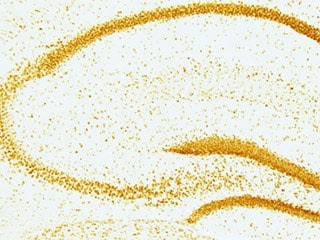Some people take stress in stride; others are done in by it. New research at Rockefeller University has identified the molecular mechanisms of this so-called stress gap in mice with very similar genetic backgrounds — a finding that could lead researchers to better understand the development of psychiatric disorders such as anxiety and depression.
“Like people, each animal has unique experiences as it goes through its life. And we suspect that these life experiences can alter the expression of genes, and as a result, affect an animal’s susceptibility to stress,” says senior author Bruce McEwen, Alfred E. Mirsky Professor and head of the Harold and Margaret Milliken Hatch Laboratory of Neuroendocrinology. “We have taken an important step toward explaining the molecular origins of this stress gap by showing that inbred mice react differently to stress, with some developing behaviors that resemble anxiety and depression, and others remaining resilient.”
The results, published September 2 in Molecular Psychiatry, point toward potential new markers to aid the diagnosis of stress-related disorders, such as anxiety and depression, and a promising route to the development of new treatments for these devastating disorders.
In experiments, researchers stressed the mice by exposing them to daily, unpredictable bouts of cage tilting, altered dark-light cycles, confinement in tight spaces and other conditions mice dislike with the goal of reproducing the sort of stressful experiences thought to be a primary cause of depression in humans. Afterward, in tests to see if the mice displayed the rodent equivalent of anxiety and depression symptoms, they found about 40 percent showed high levels of behaviors that included a preference for a dark compartment over a brightly lit one, or a loss of interest in sugar water. The remaining 60 percent recovered well from the stress. This distinction between the susceptible mice and the resilient ones was so fundamental that it emerged even before the mice were subjected to stress; some unstressed mice showed an anxiety-like preference for a dark compartment over a lighted one.
The researchers found that the highly stress-susceptible mice had less of an important molecule known as mGlu2 in a stress-involved region of the brain known as the hippocampus. The mGlu2 decrease, they determined, resulted from an epigenetic change, which affects the expression of genes, in this case the gene that codes for mGlu2.
“If you think of the genetic code as words in a book, the book must be opened in order for you to read it. These epigenetic changes, which affect histone proteins associated with DNA, effectively close the book, so the code for mGlu2 cannot be read,” says first author Carla Nasca, a postdoc in the lab and a fellow of the American Foundation for Suicide Prevention. Previously, she and colleagues implicated mGlu2 in depression when they showed that a promising potential treatment known as acetyl carnitine rapidly alleviated depression-like symptoms in rats and mice by reversing these epigenetic changes to mGlu2 and causing its levels to increase.
“Currently, depression is diagnosed only by its symptoms,” Nasca says. “But these results put us on track to discover molecular signatures in humans that may have the potential to serve as markers for certain types of depression. Our work could also lead to a new generation of rapidly acting antidepressants, such as the candidate acetyl carnitine, which would be particularly important to reduce the risk of suicide.”
A reduction in mGlu2 matters because this molecule regulates the neurotransmitter glutamate. While glutamate plays a crucial role relaying messages between neurons as part of many important processes, too much can lead to harmful structural changes in the brain.
“The brain is constantly changing. When stressful experiences lead to anxiety and depressive disorders the brain becomes locked in a state it cannot spontaneously escape,” McEwen says. “Studies like this one are increasingly focusing on the regulation of glutamate as an underlying mechanism in depression and, we hope, opening promising new avenues for the diagnosis and treatment of this devastating disorder.”


